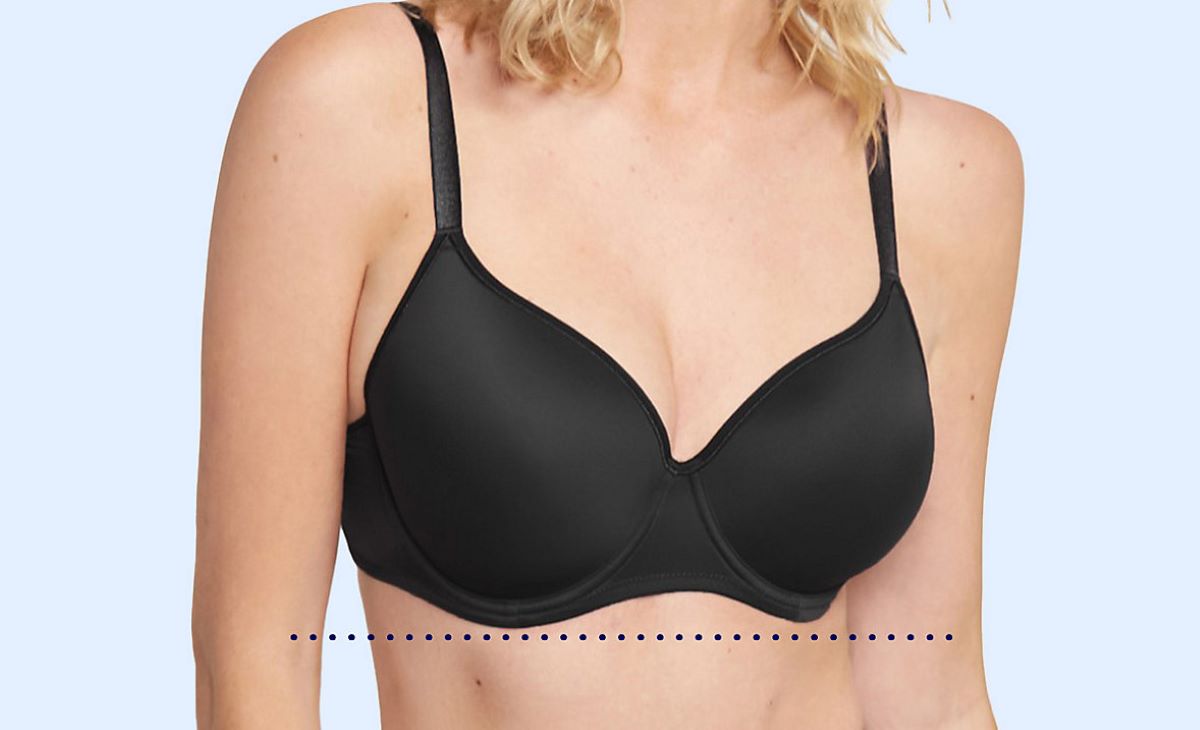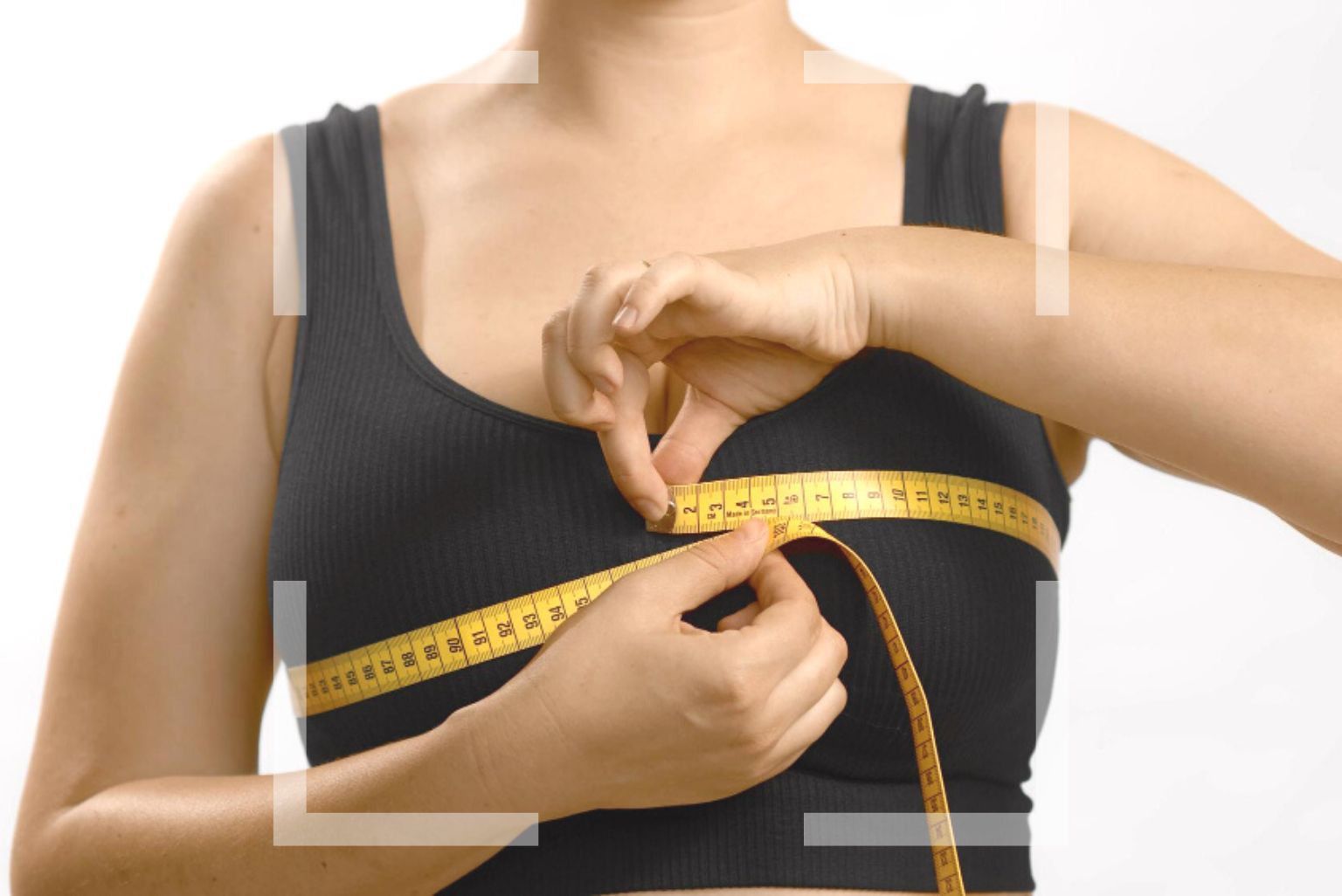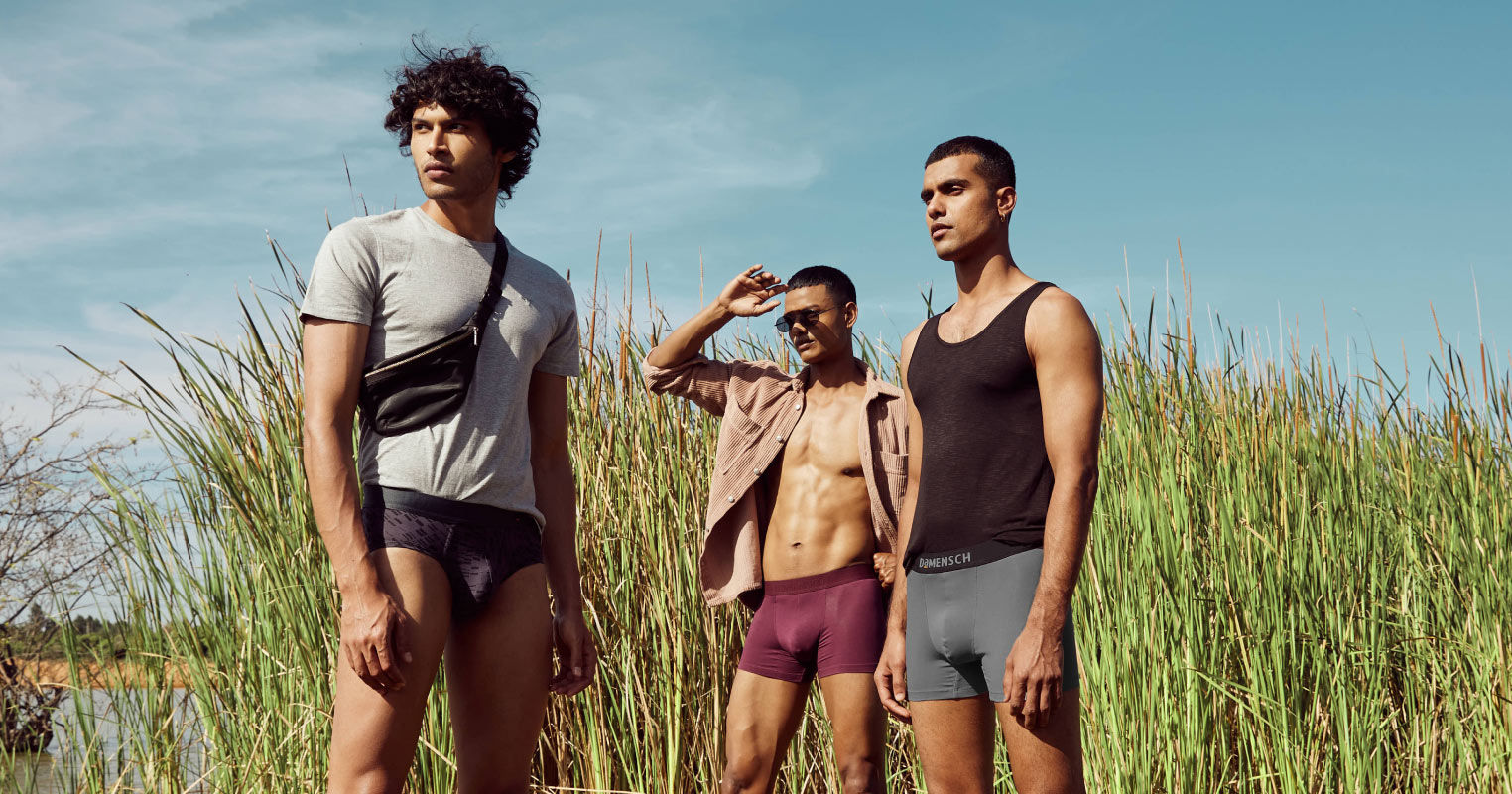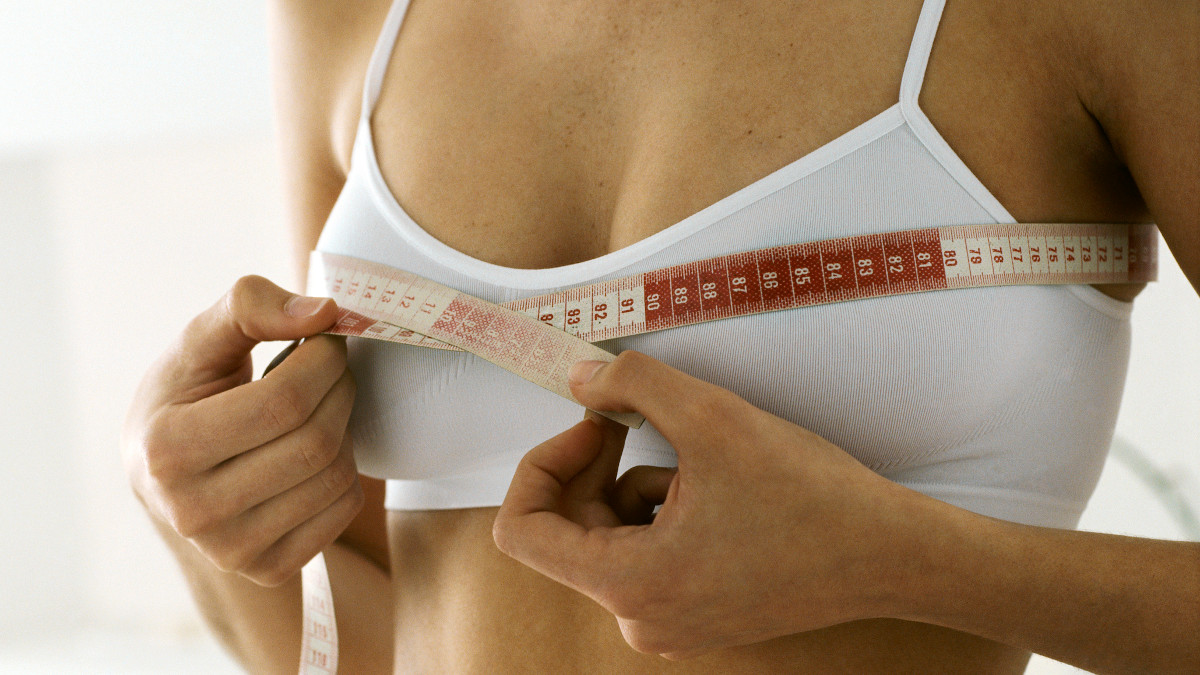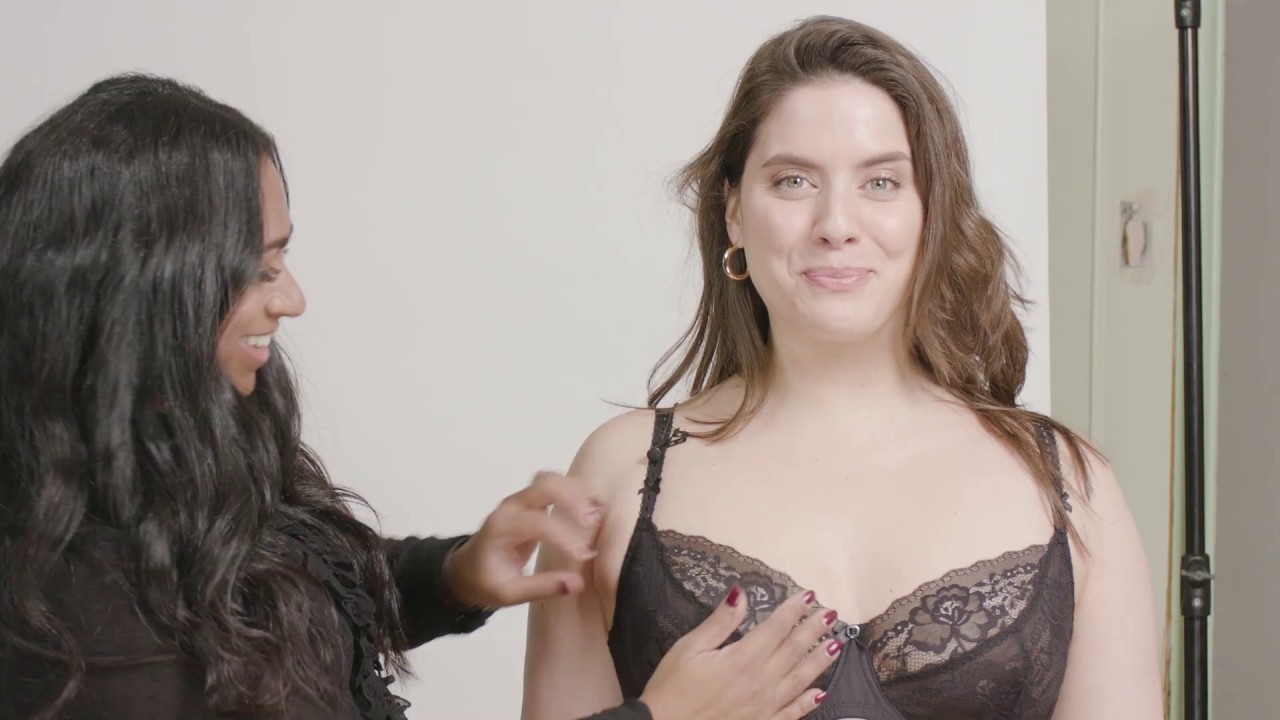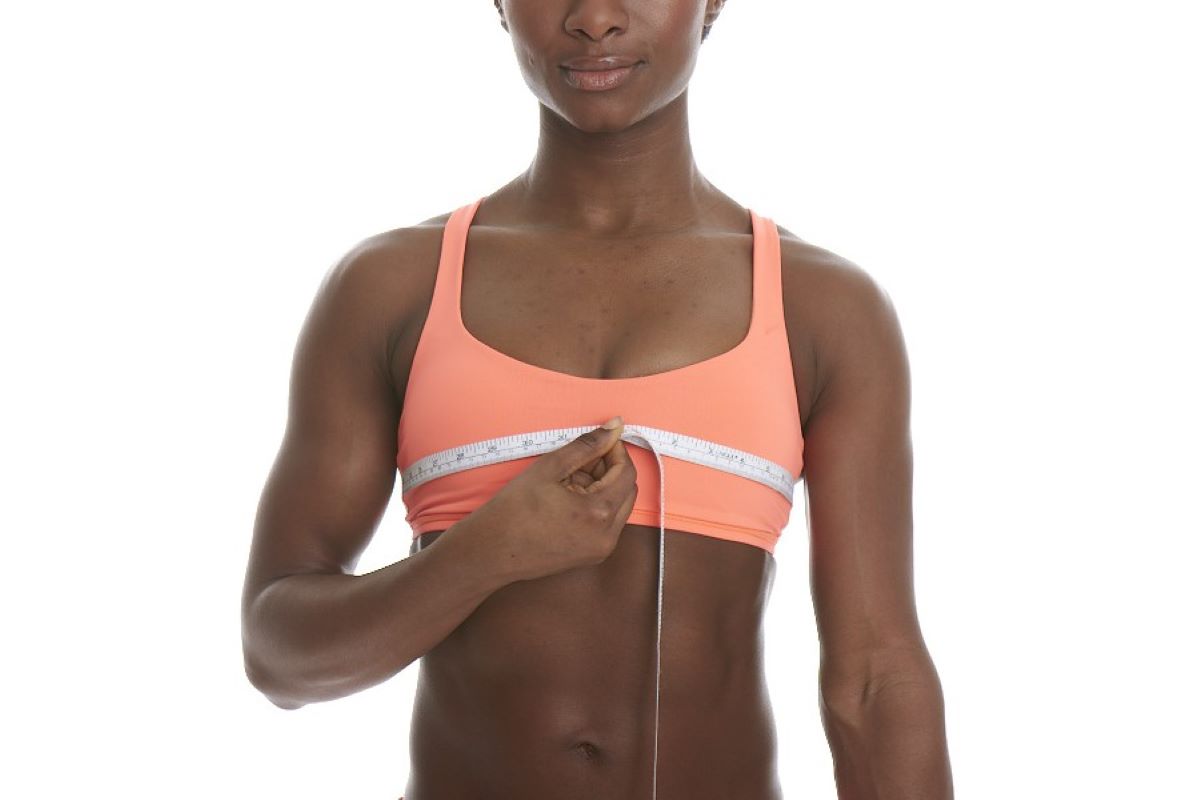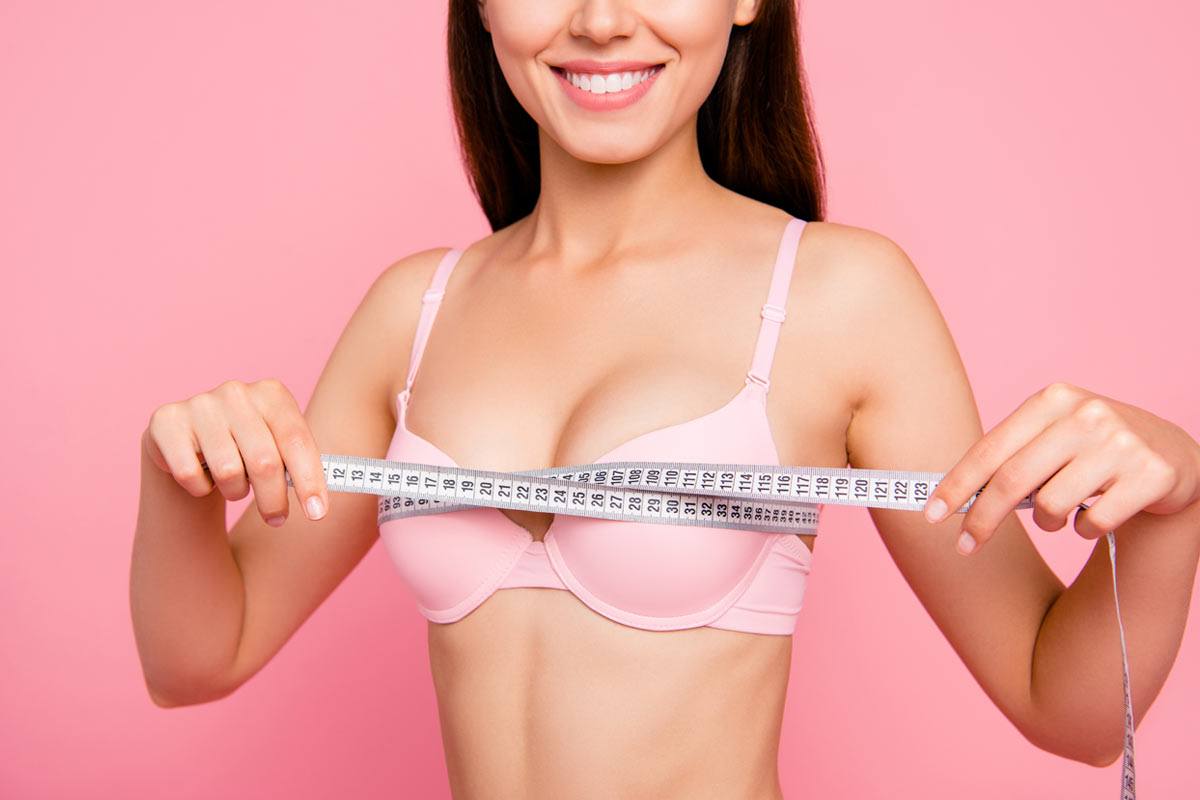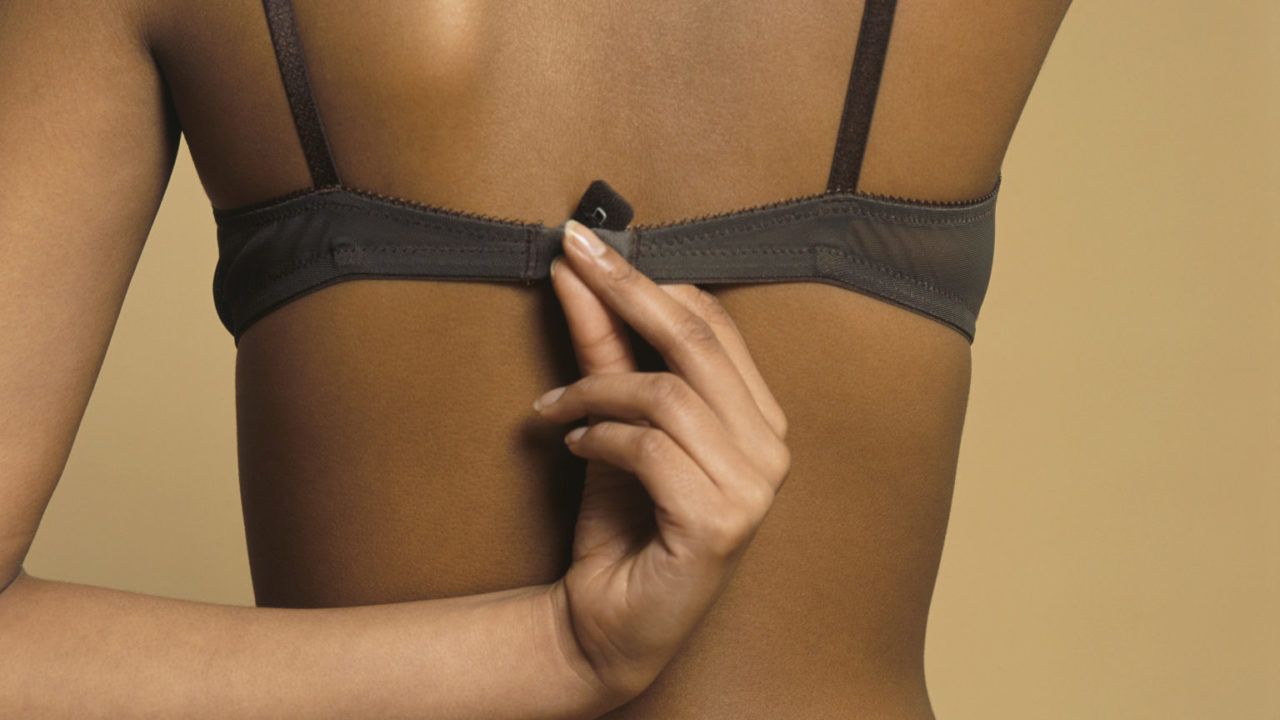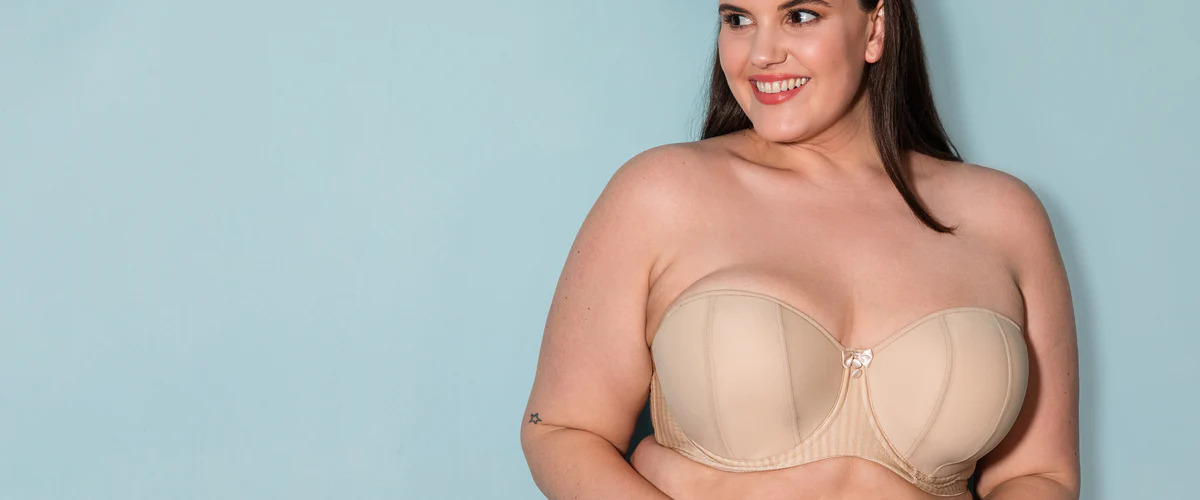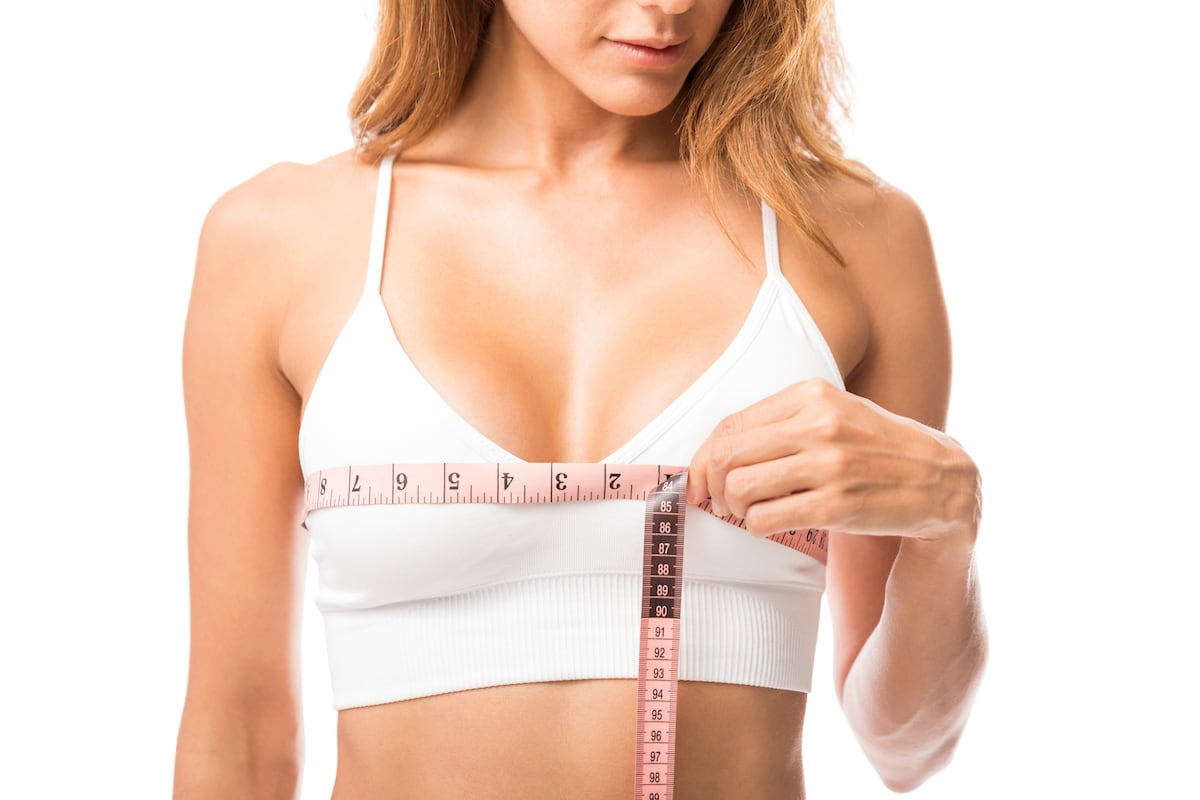Home>How-to Guides>For Women>How To Measure Your Bra Size Correctly
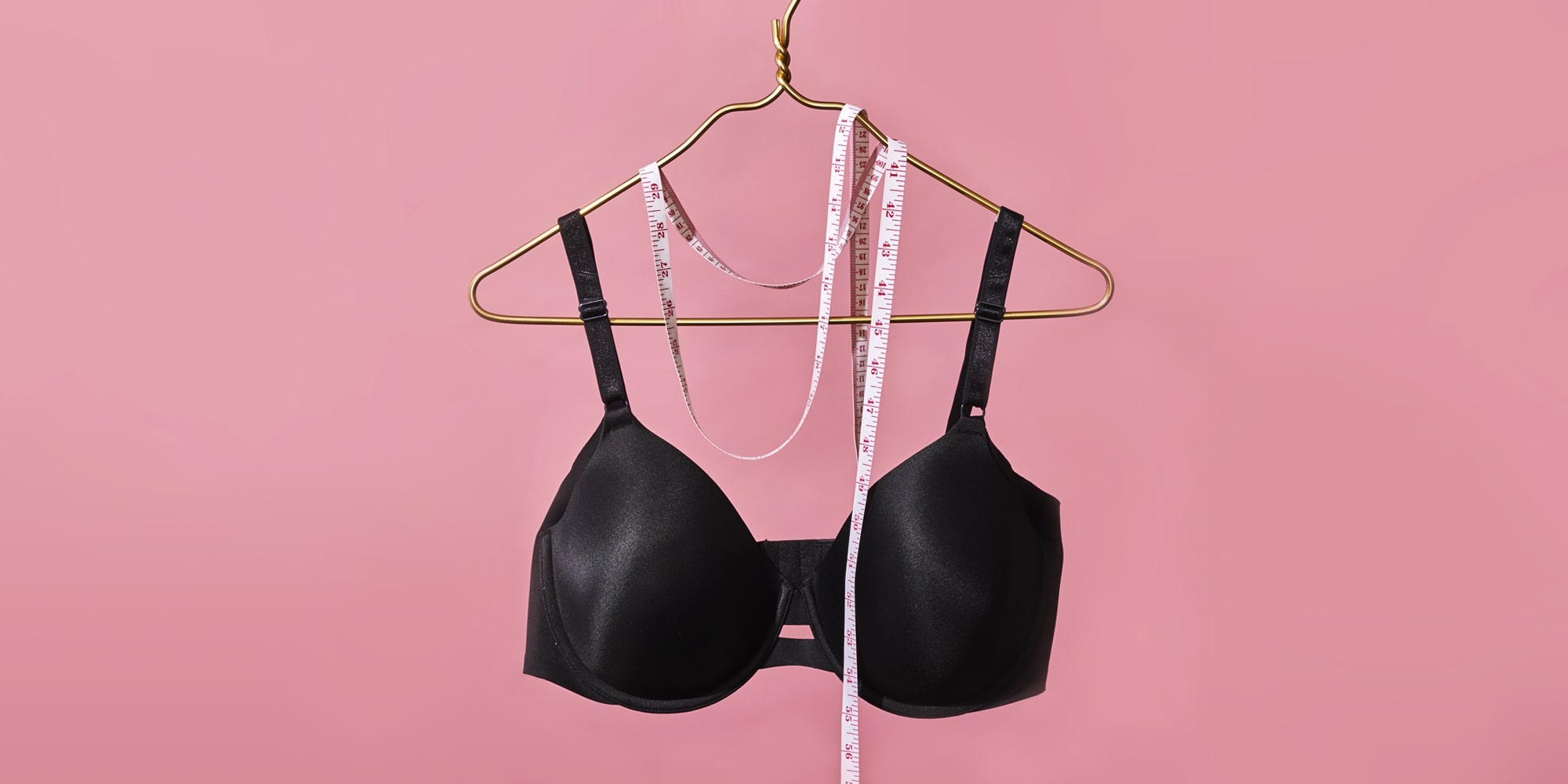

For Women
How To Measure Your Bra Size Correctly
Modified: September 23, 2023
Learn how to measure your bra size correctly with our helpful guide for women. Ensure the perfect fit and comfort for all-day confidence.
(Many of the links in this article redirect to a specific reviewed product. Your purchase of these products through affiliate links helps to generate commission for Under-tec.com, at no extra cost. Learn more)
Table of Contents
- Introduction
- Importance of Measuring Your Bra Size Correctly
- Understanding the Band Measurement
- Determining the Cup Size
- The Importance of Trying on Different Bra Styles
- Common Mistakes to Avoid When Measuring Bra Size
- Tips for Accurate Bra Measurement at Home
- Seeking Professional Help for Accurate Measurements
- Conclusion
Introduction
When it comes to finding the perfect bra, one of the most crucial steps is measuring your bra size correctly. A well-fitting bra not only provides comfort and support but also enhances your shape and boosts your confidence. However, many women are wearing the wrong bra size without even realizing it.
Measuring your bra size might seem like a daunting task, but with the right techniques and knowledge, you can ensure a proper fit every time. This article will guide you through the process of measuring your bra size correctly, allowing you to find the bras that are tailored to your unique shape.
Whether you’re shopping for a new bra, experiencing discomfort in your current bras, or undergoing physical changes such as weight gain, weight loss, or pregnancy, taking accurate measurements is essential. By understanding the band measurement and knowing how to determine the cup size, you can make informed choices when selecting bras that will provide the perfect fit and ultimate comfort.
It’s important to remember that every woman’s body is unique, and our bra size can change over time. That’s why trying on different bra styles is crucial to finding the perfect match for your body shape and personal preferences. Don’t be afraid to experiment with different styles and sizes to find what works best for you.
In this article, we’ll explore the importance of measuring your bra size correctly, delve into the details of band and cup measurements, discuss the significance of trying on various bra styles, highlight common mistakes to avoid during measurement, and provide tips for accurate measurements at home. Seeking professional help will also be discussed as an option for those who prefer expert assistance.
So, let’s dive in and discover how to measure your bra size correctly – the first step towards finding your perfect fit!
Importance of Measuring Your Bra Size Correctly
Measuring your bra size correctly is crucial for several reasons. First and foremost, wearing the wrong bra size can lead to discomfort and even pain. Ill-fitting bras can cause issues such as back pain, shoulder pain, and skin irritation. By measuring your bra size accurately, you can ensure that you’re wearing a bra that provides optimal support and comfort for your breasts.
Another important reason to measure your bra size correctly is to enhance your appearance. The right bra can lift and shape your breasts, giving you a more flattering silhouette. It can also improve your posture by providing the necessary support to the chest and shoulders. By wearing the right size, you can look and feel more confident in whatever outfit you choose to wear.
Furthermore, measuring your bra size correctly is vital for your overall breast health. Wearing a bra that is too tight or too loose can impact the lymphatic drainage and blood circulation in the breast area, which is essential for maintaining healthy breast tissue. By wearing a properly fitting bra, you can ensure that your breasts are properly supported, reducing the risk of sagging and other breast-related issues.
Not only does measuring your bra size correctly improve comfort, appearance, and breast health, but it also saves you time and money. By knowing your accurate size, you can confidently shop for bras that will fit you well without having to endure the hassle of returns or exchanges. This can prevent frustration and make the bra shopping experience more enjoyable.
It’s worth noting that a woman’s bra size can change over time due to factors such as weight fluctuations, pregnancy, and aging. Therefore, it’s important to measure your bra size regularly to ensure you’re always wearing the right fit. By taking just a few minutes to measure yourself correctly, you can reap the benefits of a well-fitting bra and enjoy all-day comfort.
Now that we understand the importance of measuring your bra size correctly, let’s dive deeper into the specifics of band measurement and cup size determination to help you find your perfect fit.
Understanding the Band Measurement
The band measurement is a fundamental component of finding your correct bra size. It refers to the measurement around your ribcage, just below the bust. The band provides most of the support in a bra, so it’s crucial to get this measurement right.
To measure your band size accurately, start by wearing a non-padded bra or no bra at all. Take a soft measuring tape and wrap it around your ribcage, making sure it sits snugly against your skin without digging in. The tape should be parallel to the ground and positioned just below your bust, where the band of the bra would sit.
Make a note of the measurement in inches or centimeters, rounding it to the nearest whole number. This measurement will be your band size. For example, if your measurement is 32 inches, your band size will be 32.
It’s important to remember that the band size should be firm but not overly tight. A band that is too loose will provide inadequate support, while a band that is too tight will be uncomfortable and restrict your breathing. The band should feel snug but allow you to breathe freely and slide no more than two fingers underneath.
When trying on bras, start with your measured band size. If the band feels too tight or too loose, adjust the size accordingly. For example, if the band feels tight, you may want to size up to a 34. If the band feels loose, you may want to size down to a 30. Remember, the band should provide a secure and supportive fit without causing discomfort.
It’s worth noting that different brands and styles of bras may have slightly different sizing, so don’t be discouraged if you need to adjust your band size to find the perfect fit in certain bras. The most important factor is how the band feels and whether it provides the desired level of support.
Now that we have tackled the crucial band measurement, let’s move on to understanding how to determine the cup size, which is equally important in finding the right bra fit.
Determining the Cup Size
After measuring your band size, the next step is to determine your cup size. The cup size refers to the volume of your breasts and plays a crucial role in finding a bra that fits properly and flatters your shape.
To determine your cup size, you’ll need to take another measurement – the bust measurement. This measurement is taken around the fullest part of your breasts, typically across the nipples. Again, use a soft measuring tape and make sure it is parallel to the ground as you wrap it around your bust.
Once you have your bust measurement, subtract your band measurement from it. The difference will correspond to a letter that represents your cup size. To make it easier, cup sizes are denoted by letters such as A, B, C, D, and so on. A smaller difference indicates a smaller cup size, while a larger difference corresponds to a larger cup size.
Here’s a general guide to help you understand how band and cup sizes correlate:
- If the difference between your bust and band measurements is around 1 inch, your cup size is A.
- If the difference is around 2 inches, your cup size is B.
- If the difference is around 3 inches, your cup size is C.
- If the difference is around 4 inches, your cup size is D.
- And so on.
It’s important to keep in mind that cup sizes can vary depending on the band size. For example, a 32D cup will not be the same size as a 38D cup. As the band size increases or decreases, the cup volume changes as well. This is known as sister sizing.
As you try on bras, it’s essential to assess how the cups fit. The cups should fully encase your breasts without any spillage or gaps. They should also offer a natural and symmetrical shape. If you notice any unevenness, bulging, or gaping, it may indicate that the cup size is not quite right.
Keep in mind that cup sizes are not the ultimate measure of breast size or shape. Every brand and style may have slight variations, so exploring different styles and brands can help you find your perfect cup size in each specific bra.
With an understanding of band and cup sizes, you’re on your way to finding a bra that fits you comfortably and flatters your figure. However, it’s important to remember that measuring your bra size correctly is just the beginning. Trying on different bra styles is equally important to ensure a proper fit and comfortable wear. We’ll explore the significance of trying on various bra styles in the next section.
The Importance of Trying on Different Bra Styles
While measuring your band and cup size accurately is essential, it’s equally important to try on different bra styles to find the perfect fit. Each bra style is designed differently, and what works for one person may not work for another. By exploring various styles, you can discover the ones that provide optimal support, comfort, and enhance your shape.
One of the main reasons for trying on different bra styles is to accommodate your unique breast shape. Breasts come in various shapes and sizes – some are fuller on the top, while others are fuller on the bottom. Trying on different styles, such as plunge, balconette, or full-cup bras, allows you to see which styles provide the best lift and support for your specific breast shape.
The fabric and construction of a bra also play a role in the overall comfort and fit. Fabrics with stretch or molded cups may offer different levels of support and shaping. Trying on different fabrics and construction types helps you determine which ones feel the most comfortable against your skin and provide the desired support.
Additionally, different bra styles serve different purposes and work better with specific outfits. For instance, a strapless bra is ideal for shoulder-baring tops or dresses, while a sports bra is a must-have for physical activities. By trying on different styles, you can build a well-rounded bra wardrobe that caters to all your fashion and lifestyle needs.
When trying on bras, pay attention to how the straps, back band, and underwire, if applicable, feel on your body. The straps should not dig into your shoulders or slip off, but instead, provide a secure and comfortable fit. The back band should be snug and sit parallel to the ground, offering ample support without leaving red marks or causing discomfort. If the bra has an underwire, ensure that it encases your breasts fully and rests comfortably against your ribcage without poking or digging in.
Don’t be discouraged if you don’t find the perfect fit right away. Bra shopping can be a trial-and-error process, and it may take trying on several bras to find the ones that suit your preferences and needs. It’s also worth seeking assistance from knowledgeable sales associates who can provide guidance and insight into different bra styles.
By trying on different bra styles, you can find the ones that make you feel confident, comfortable, and supported. Remember to keep an open mind and have fun exploring the world of bras! Next, we’ll discuss some common mistakes to avoid when measuring your bra size.
Common Mistakes to Avoid When Measuring Bra Size
When it comes to measuring your bra size, there are some common mistakes that many women make. Avoiding these mistakes will ensure more accurate measurements and a better-fitting bra.
One common mistake is wearing the wrong bra when taking measurements. It is crucial to wear a non-padded bra or no bra at all to get the most accurate measurements. Padded bras can add extra bulk, which can result in an incorrect band and cup size.
Another mistake is pulling the measuring tape too tight or too loosely. Pulling the tape too tight can result in an overly tight band measurement, leading to discomfort and an improper fit. On the other hand, pulling the tape too loosely can result in a loose band measurement, which won’t provide adequate support.
Measuring in the wrong location is another mistake to avoid. The band measurement should be taken just below the bust, where the band of the bra would sit. Placing the measuring tape too high or too low can result in an inaccurate measurement and subsequently, an ill-fitting bra.
Not considering the breast’s natural shape and position is another common mistake. Every woman’s breasts have a different shape, and accounting for this is essential for a proper fit. Make sure the measuring tape is parallel to the ground and wraps around the fullest part of the bust to get an accurate measurement.
Lastly, relying solely on measurements without trying on different bra styles is a mistake. Remember that measurements are a starting point, but different brands and styles can fit differently. Trying on various bra styles will give you a better sense of what works best for your unique shape and preferences.
By avoiding these common mistakes, you can obtain more accurate measurements and increase the likelihood of finding a bra that fits you properly and comfortably. Now, let’s explore some tips for accurately measuring your bra size at home.
Tips for Accurate Bra Measurement at Home
Accurately measuring your bra size at home is entirely possible with the right techniques and attention to detail. Here are some tips to help you achieve accurate measurements:
1. Use a soft measuring tape: Ensure that you have a flexible measuring tape that can easily wrap around your body without causing discomfort. Avoid using rigid materials that may give inaccurate measurements.
2. Measure without outerwear: To get precise measurements, remove any bulky clothing or outerwear that could add extra bulk or distort the measurements. Wear a non-padded bra or no bra at all when measuring.
3. Stand up straight: Maintain good posture and stand up straight while taking measurements. This ensures an accurate representation of your body shape and provides more reliable measurements for a well-fitting bra.
4. Ask for assistance if needed: If possible, have someone assist you in measuring your band and bust size. They can help ensure that the measuring tape is straight and properly positioned, leading to more accurate measurements.
5. Measure snugly but not too tight: When measuring your band size, make sure the tape is snug against your skin, but not overly tight. It should fit comfortably around your ribcage, allowing you to breathe normally.
6. Take multiple measurements: To ensure accuracy, take multiple measurements and compare the results. This helps to account for any inconsistencies due to tape placement or slight variations in your body shape.
7. Round to the nearest whole number: When recording your measurements, round to the nearest whole number for simplicity. This will give you a more practical and easier-to-work-with measurement for determining your bra size.
8. Refer to a size chart: Once you have your band and bust measurements, refer to a reputable size chart provided by bra manufacturers or lingerie retailers. This will help you determine the appropriate band size and cup size based on your measurements.
Remember, measuring your bra size accurately at home is a great step toward finding your perfect fit, but trying on different bra styles and brands is equally important. Don’t be afraid to explore different options and experiment to find the styles and sizes that provide the optimal comfort and support for your body.
Now that we have explored the tips for accurate bra measurement at home, let’s discuss the option of seeking professional help for the most precise measurements.
Seeking Professional Help for Accurate Measurements
While measuring your bra size at home can provide useful guidelines, seeking professional help can offer even more precise measurements, particularly if you’re unsure or have difficulty measuring yourself accurately. Professional bra fitters are trained to assess and measure your bra size, taking into account various factors that may affect the fit.
One of the main advantages of seeking professional help is the expertise and experience of the fitters. They are knowledgeable about different bra brands, styles, and sizing systems, allowing them to provide personalized recommendations based on your unique body shape and preferences.
Bra fitters can evaluate your measurements and consider other aspects such as breast shape, firmness, and any specific concerns you may have. They can suggest suitable styles, features, and brands that will enhance your comfort, support, and appearance.
Additionally, professional bra fitters have access to a wider range of sizes and styles than what may be available in standard retail stores. This can be particularly beneficial if you have a hard-to-find size or if you are looking for specialty bras such as maternity bras or post-mastectomy bras.
During a professional fitting, you’ll have the opportunity to try on different bras under the guidance of the fitter. They can easily identify any fitting issues and suggest adjustments or alternative sizes to ensure the best fit possible. This hands-on approach can save you time and effort in finding the right bras on your own.
It’s important to note that professional bra fittings can be done in specialized lingerie stores, department stores, or dedicated bra fitting services. You can contact local retailers or research online to find reputable professionals in your area.
While seeking professional help offers many benefits, it’s essential to remember that fitting techniques and preferences may vary among fitters. If you’re not satisfied with the fitting or have any doubts, don’t hesitate to seek a second opinion or try a different fitting service.
Whether you choose to measure your bra size at home or seek professional help, the ultimate goal is to find bras that fit you comfortably, provide support, and boost your confidence. Now that we’ve explored the importance of accurate measurements and options for seeking professional help, let’s summarize the key points and encourage you to take the first step toward finding your perfect fit.
Conclusion
Measuring your bra size correctly is the foundation for finding bras that fit you comfortably, provide support, and enhance your shape. By understanding the band and cup measurement techniques, trying on different bra styles, and avoiding common measurement mistakes, you can ensure a more accurate fit.
Accurately measuring your bra size at home is achievable with the right tools, techniques, and attention to detail. However, if you’re uncertain or prefer expert assistance, seeking professional help from trained bra fitters can provide even more precise measurements and personalized recommendations.
Remember that measuring your bra size is just the beginning. Trying on different bra styles, exploring various brands, and considering your unique breast shape are equally important in finding the perfect fit. Each individual may have different preferences and requirements, so don’t be discouraged if it takes some time and experimentation to find your ideal bras.
Whether you measure your bra size at home or seek professional help, the goal is to find bras that not only fit you well but also make you feel confident, comfortable, and supported. Regularly assess your bra size, especially if you experience any physical changes, to ensure ongoing comfort and optimal support.
Now that you are equipped with the knowledge and tips to measure your bra size accurately, it’s time to embark on your bra-fitting journey. Explore different styles, embrace your unique shape, and enjoy the newfound comfort and confidence that comes with wearing a well-fitting bra.
Remember, your bra size may change over time, so don’t hesitate to reassess and adjust as needed. With the right size and style, you can experience the transformative power of a well-fitting bra.
